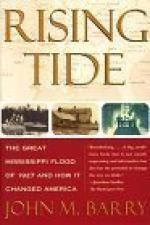
|
| Name: _________________________ | Period: ___________________ |
This test consists of 5 short answer questions, 10 short essay questions, and 1 (of 3) essay topics.
Short Answer Questions
1. Before going to Washington, what was Hoover's life like?
2. What was James Thompson always seeking?
3. What helped Leroy Percy lose a lot of his political influence outside of the Delta area?
4. What ongoing problem existed at the mouth of the Mississippi River that prohibited shipping?
5. What was the weather like in the Prologue as the guests of the social party head home?
Short Essay Questions
1. After facing complete opposition, how would Eads' offer to independently pay for the construction of the jetties completely change the minds of the public and politicians?
2. Why do people want to follow the ways of the Ku Klux Klan rather than follow Percy's successful lead?
3. Why did the author start the book on a stormy night?
4. Although the blacks are traditionally known for harvesting cotton, LeRoy Percy does not seek their help to avoid any racial tensions. Instead, Percy imports thousands of Italians and racial problems still emerge. Why does this happen?
5. The railroads and river make the Delta region flourish, yet there is a shortage of workers in the area. How will the better treatment of blacks by LeRoy Percy help this problem?
6. Thompson has the idea of dynamiting the levees to the south of New Orleans, but who gets the idea primarily accepted by everyone?
7. As committees are formed to decide about dynamiting the levee, the Mounds Landing crevasse is brought up in conversation. Why is this crevasse brought into the conversation?
8. After the Mounds Landing Crevasse widens and thousands of acres are underwater, many other levees begin to fail. The white people left the area, while the black people stayed behind to work. What does this tell the reader about the Delta region?
9. Why does Thompson feel he is doing a good thing by withholding news from the public?
10. As many cities along the Mississippi found themselves under tremendous amounts of water, what was the mood in the Midwest?
Essay Topics
Write an essay for ONE of the following topics:
Essay Topic 1
World War I was occurring during the time of the flood. How did the war affect the Delta region during this time? Why was the war mentioned repeatedly throughout the book? Who did the war affect the greatest and why?
Essay Topic 2
During the Flood of 1927, many different "committees" were formed. Why were numerous committees established? From what social class were the chairmen selected? Were all the committees necessary?
Essay Topic 3
When the St. Bernard and Plaquemines Parish levee was to be dynamited, tickets were sold to the event. Who were the main ticket holders? What did this tell the reader about society in 1927? What did this tell the reader about the citizens of New Orleans?
|
This section contains 846 words (approx. 3 pages at 300 words per page) |

|




